Strategy of the Month: Building Participation
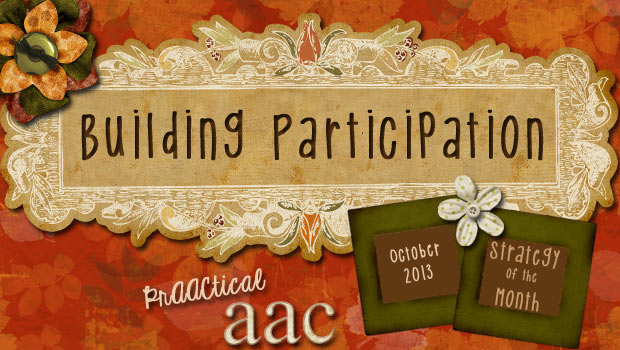
Do you know any of our friends?
- Jenna can use a talking switch with only a little bit of support. But at calendar time, no one thinks of asking her a question.
- Hao knows almost two dozen signs and can use a communication wallet with non-signers. But at social gatherings, he’s mostly off to the side playing a game on his iPhone.
- Isaac uses his SGD capably and can create grammatically correct sentences that include noun phrases and conjunctions. But in Chemistry, his lab group conducts their experiments and writes up the lab report without his contributions.
- Sienna is able to choose between preferred and non-preferred items in a field of three and is learning to do so in a field of four. But the only time she gets to
 make a choice is at mealtimes.
make a choice is at mealtimes.
Like many of you, we put in countless hours helping children and adults who are learning to use AAC become better communicators. Sometimes we work in therapy rooms or off to the side in classrooms. We do AAC teaching in waiting rooms, hallways, and elevators. SLPs are providing AAC supports at desks and tables, on the carpet and in the grass. We’re where the clients are because want this to work for the people we serve. And yet, sometimes the outcomes are less than stellar. The gains that are evident to us don’t always serve a real life function in the lives of clients who use AAC. So, this month, we’ll focus on putting AAC to work and using it to build participation in everyday life. Let’s talk about active participation.
We can’t talk about the role of participation without discussing the Participation Model (Beukelman & Mirenda, 1988; 2013), a well-known framework that has been guiding AAC practices around the world. The main thrust of the model is to identify the learner’s patterns of participation and determine his/her communication needs by looking at two kinds of barriers to participation: opportunity barriers and access barriers. Based on the results of assessment in those two threads, we then beginning planning intervention for the short-term and looking ahead to the longer term. Instruction is provided, both to the learners and their key communication partners. Finally, we evaluate the effectiveness of the intervention on participation. If they aren’t sufficiently participating in daily experiences, we loop back to the starting point and repeat the process to close those gaps.
An important step in the process is to determine how the AAC learner is participating at the current point in time. Generally, we look at participation patterns within regularly-occurring activities, such as a class, eating lunch in the cafeteria, working, or attending club meetings/activities. A participation inventory is used based on observation of the learner in those activities (see Beukelman & Mirenda, p112 for a form often used for this purpose). We score not only the AAC learner’s participation, but also that of a typical peer who also participates in that activity. It may be a classmate, a friend, fellow worker, or a sibling, but not a teacher, aide, or supervisor. That allows us to compare the two. How does the AAC learner participate compared to a classmate in English class? Does his/her participation at work look any different than fellow employees? We evaluate the AAC learner’s participation not against an abstract or ideal standard, but against the current participation partners of other (speaking) people doing that same activity. That’s prAACtical.
The information we get is enormously helpful in guiding our plans for intervention. Let’s look at some examples.
Bella is a first grader with significant physical impairments who communicates primarily with facial expression, movement, eye gaze, and vocalizations and spends her school days in a special education classroom. Most of her classmates are able to talk and one of them, Jonah, was chosen as the focal peer. When we looked at them in the classroom, here are things we noticed:
- At morning circle, Jonah answered questions about the calendar, weather, and other topics 19 times.
- Bella answered 2 questions.
- When there were songs, poems, or chants, Jonah sang/said most of the words.
- Bella looked on eagerly. She was helped to move her arm up and down during one of the songs
- At writing time, Jonah required some redirection to complete his worksheet.
- Bella was wheeled up nearby to watch.
Jorge is a ninth grade student in general education who communicates with a few word approximations, high tech SGDs, and a mobile device with an AAC app. He is in an English class with Nicole, a typical peer. Here are some observations from that classroom.
- During the lesson, Nicole quickly flipped to the part of the book the teacher was reading from and followed along.
- By the time Jorge got there, the teacher had moved on to asking questions about the passage.
- Nicole didn’t volunteer answers, but gave them when asked.
- Jorge raised his hand to answer a question on 3 occasions but wasn’t called on to answer.
- In group work, Nicole socialized and joked around.
- Jorge watched them closely.
- As the group got started, Nicole gave suggestions that the group acted on.
- Jorge asked a question that a student answered briefly.
- When the class was wrapping up, Nicole was listening to the teacher summarize the assignment.
- Jorge left early so that he could navigate the hallway when it was relatively empty.
The value of the participation inventory is clear: it illuminates discrepancies that we need to address. These gaps should be in our minds as we write our goals, develop the AAC materials, and provide our intervention. Most importantly, those are the things we should be looking at when we evaluate the effectiveness of our work.
Throughout the month, we will look at strategies for building participation. Real participation. In schools, in the community, at home. If you’re not already doing some sort of discrepancy analysis to see how our AAC clients compare to others doing that same activity, you may want to give that some thought. The form in the Beukelman and Mirenda (2013) book is the ‘industry standard,’ but you’re also welcome to check out our take on it here.
Either way, we’re challenging ourselves this month to think more about the active participation of our AAC learners in all of their different life activities. Come along for the ride!
:::::::::::::::::::::::::::::::::::::::::::::::::::::::::::::::::::::
Beukelman, D. R., & Mirenda, P. (2013). AAC: Supporting Children and Adults with Complex Communication Needs. 4th Edition. Baltimore, Maryland: Paul H. Brookes.
Beukelman, D.R. & Mirenda, P. (1988). Communication options for peresons who cannot speak: Assessment and evaluation. In C.A. Coston (Ed.), Proceedings of the National Planners Conference on Assistive Device Service Delivery (pp. 151-161). Washington DC: Association for Advancement of Rehabilitation Technology.
Filed under: Strategy of the Month
Tagged With: assessment, classroom, discrepancy analysis, generalization, participation, peer
This post was written by Carole Zangari
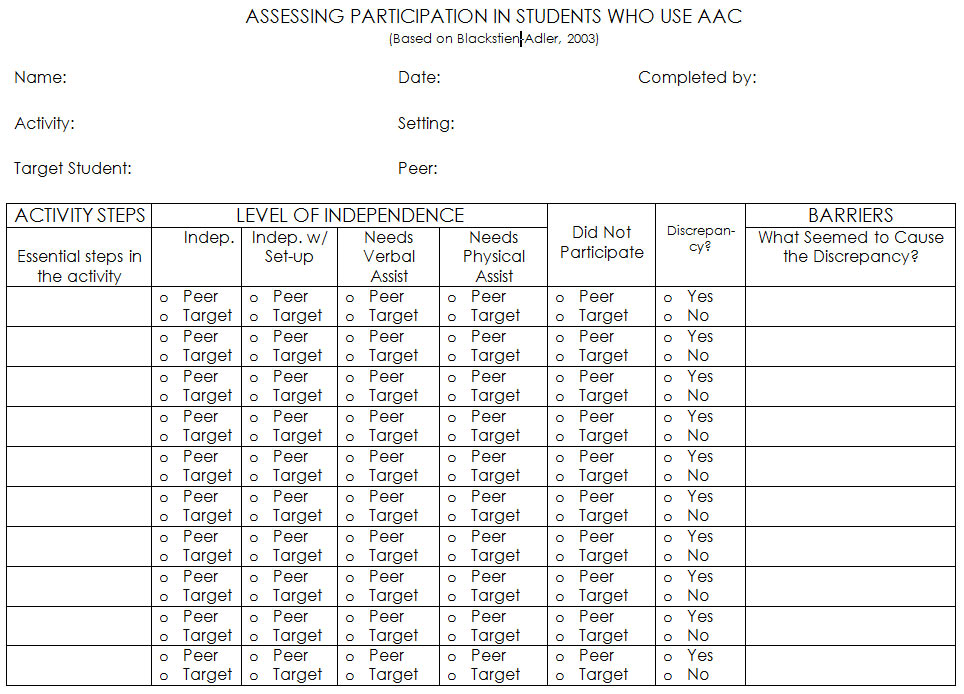


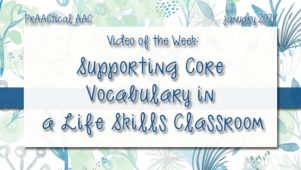
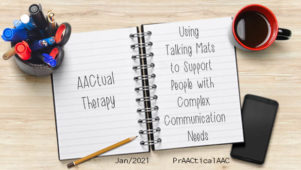
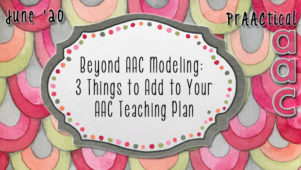
4 Comments
Thanks for sharing this. I remember observing a colouring activity in a special education classroom, which had several very active, distractible students with autism, and one very quiet student in a manual wheelchair. All the active students received extensive encouragement, redirection and handover hand support to sit at the table and complete the task. The other student received no verbal support, despite appearing to have no even started the activity. On closer inspection, the student had begun the activity, however did not have the strength to press the crayons hard enough on the paper to make a visible mark, and could not reach the pens to change colours. No AAC support was available for the student to request help, despite the student having the ability to use it.
Sometimes it takes an observer to notice the discrepancy, as teachers can be kept busy with other students!
Gail, that is such an excellent point. It is so easy to overlook the quieter students and completely miss key information like this. Thanks for this comment. It served as a helpful reminder that we have to take a step back and observe carefully.
I really enjoyed this post. I think it helps take some of the mystery out of planning and implementing AAC and developing appropriate and relevant goals. I’d love to share it with the staff at my school, with your permission.
Absolutely, Sharon. I’d be honored.